Quite a few smartphone brands in recent years are breaking away from their parent company to make a mark in the industry. However, a successful story needs two main ingredients. First is figuring out the right balance of features and price. The second is generating hype. When OPPO sub-brand Realme broke away from the company a year back, it managed to capitalise on both these mantras and as such has been giving Xiaomi, its biggest rival which has been in India for nearly 6 years, a run for its money. Now we have a new brand entering the market called iQOO, formerly under Vivo, and it too has a product that has been generating some hype as of late. iQOO products (short for I Quest On and On) have largely been operating in the Chinese market before Vivo decided to expand the iQOO user base in other territories as well, including India.
The very first phone from the company in the country is going to be the iQOO 3 5G. It is one of the first 5G-enabled phones to make its way to India, even though 5G coverage in the country is pretty much non-existent. It is also one of the first devices to come with the Qualcomm Snapdragon 865 flagship chipset. To be clear, there is no iQOO 1 or iQOO 2. Looking on paper, the iQOO 3 has it all. Top-tier specs, great camera hardware, latest Android, flashy (subjective) design, a great display, 5G and more. Priced at Rs 44,990, the IQOO 3 5G has signaled war on the turf that has been held by OnePlus for quite a few years. I have had the device for some time now and here is what I make of it.
Verdict
The IQOO 3 5G is undoubtedly the fastest phone that I’ve used in the Android world till now. However, the price gap between the 5G and 4G variants of the device has me tilted towards the latter simply because there exists no viable infrastructure for 5G support in India.
Design and display
We have reached that saturation point in the smartphone world where almost all devices look the same. That is not to say that the iQOO 3 looks bland. A shiny glass layer adorns the back of the phone while the camera array on the top-right is slightly raised which makes the phone wobble when placed on a flat surface. The quad-camera module itself seems very familiar to the one seen on the Samsung Galaxy A51 (review) or the Vivo V17 (review), both of which have an L-shaped housing for the rear cameras. The IQOO branding can be seen on the bottom left. The colour scheme for our review unit is called Tornado Black, which has a dual-tone colour shift between black and purple. There is also an ostentatious Volcano Orange coloured variant as well which, to put it mildly, is not that good looking.
The iQOO 3 feels quite bulky in my hand which is surprising since it does not pack in a mammoth battery. The phone is also on the thicker side with the display slightly raised from the frame of the phone instead of sitting flush like most premium/affordable flagship phones. However, the curved back gives a good enough grip on the device even though the protruding display might feel a bit uncomfortable to hold. I would still recommend that you slap on the translucent but very durable case that IQOO has provided inside the box.
As far as button and ports go, iQOO has placed both the volume rocker and power buttons on the same side, an arrangement that I personally do not prefer. This creates a problem when I’m trying to lower the volume but accidentally end up pressing the power button. The right side of the phone has a dedicated AI-assistant key which can be customised to fire the Google Assistant. I do like the orange accents that the power button has on our review unit. The bottom of the phone has the speaker grille, a Type-C port, and the dual-SIM port with no expandable storage. It’s nice to see the headphone jack still being retained, although I’m not a fan of its positioning on the top. To appease gamers, the iQOO 3 also has included two capacitive sensors on the phone’s left and they can be mapped to virtual buttons in the game. More on that later. There is something that is to be said about the charging cable which snaps on horizontally rather than vertically, quite reminiscent of MacBook Pro chargers. If iQOO thought this was going to make it easy to hold then they were mistaken. The charging cable keeps coming in the way of my pinky finger and is even more troublesome when I’m holding the phone in landscape mode.
The iQOO 3 has a large 6.44-inch Super AMOLED display with FHD+ resolution. As with other Samsung panels in high-end phones, the iQOO 3 also boasts of a stunning and colour accurate display. The phone is said to reach a peak brightness of 1200 nits which is even more than that of the latest iPhones. While I was not able to quantifiably test this claim, I saw no legibility issues even in the harshest of sunlight. The display supports 100 percent sRGB Color Gamut which ensures crisp colours and deeper blacks than a standard IPS LCD display. iQOO has gone for a punch-hole implementation for housing the selfie shooter and it is said to be the smallest in the segment. Whether that claim is true or not, I never found the punch-hole obtrusive enough to disturb my viewing experience. Really the only gripe I have about this fantastic display is that it only refreshes at 60Hz instead of the 90 or even 120Hz refresh rates that are out there. On the plus side though the screen boasts 180Hz touch response rate, higher than most competing smartphones which have 120Hz. Basically it means that the phone will register your touch faster.

Pro Tip: iQOO 3 5G features the Glance lockscreen
Glance will liven up your lock screen experience by showing you content related to everything you like, whether its news, sports, fashion, entertainment, or astrology – and you will be able to enjoy all this without even unlocking your device. Not only that, it also lets you watch short videos and play games on your lock screen. To view all the different content just press the power button and keep swiping left. And the best part? Glance is completely personalized so you can also customize the content according to your preferences in the settings menu. What are you waiting for? Start swiping your Glance lock feed now!
Cameras
The iQOO 3, like many smartphones in the mid-range category, boasts of a quad-camera setup. The L-shaped housing has a 48MP primary sensor with f/1.8 aperture, 13MP ultra-wide lens with an f/2.4 aperture, 13MP telephoto sensor with f/2.2 aperture and 2MP depth sensor. On the face of it, the camera hardware is very similar to smartphones in the budget category but the image processing happening in the background is where the magic happens.
Clicking daylight photos is something all budget flagships/mid-range smartphones are doing pretty great and it is the same with the IQOO 3. Images are extremely crisp and detailed even without the UHD 48MP mode on. The phone handles exposure calibration extremely well with a good dynamic range in the photos across various lighting conditions. Some points can be docked for slight over-saturation of greens and reds, but to any normal person, it might not even be noticeable.
As far as other modes go, the ultra-wide lens happens to have a 123-degree field of view which encapsulates a lot more in the frame than the primary sensor. However, it does come at the cost of detailing and skewed colour temperatures, something that plagues almost all the ultra-wide sensors. The ultra-wide lens also doubles up as the macro lens as well and iQOO has said that it could focus at objects up to 2.5cm. Detailing and focus are again quite remarkable on the phone but it requires a lot of light, so using it in the night time is not ideal.
Speaking of which, the iQOO 3 also has a dedicated Night mode for low-light photography. Fundamentally it is the same as the night mode that Vivo offers on its mid-range/budget flagship smartphones. However, the Spectra 480 image signal processor employed by the Snapdragon 865 SoC gives extremely pleasing results. While the focus could be considered soft in some photos, the detailing and exposure are quite commendable. Varied conditions of dim lighting churned out more than satisfactory results while flash photography worked as expected.
On the front, there is a 16MP, f/2.0 lens which also supports portrait mode shots. In general, the phone shoots great selfies with good details but the excessive face smoothening even when beauty mode is turned off still remains a problem. As far as video recording capabilities of the phone go, you have the option of shooting at 4K, 1080p and 720p videos @ 30/60 fps and slow-mo videos @960 fps. The phone also offers you a ‘Super anti-shake’ mode which significantly reduces shake in the video but it limits the resolution to 1080p.
Performance and software
Qualcomm is in the business of providing some of the best, if not the best, mobile computing platforms in the world. It comes in as little surprise that the company’s latest flagship chipset, the Snapdragon 865, makes the iQOO 3 unbelievably fast. As mentioned before, this is the very first phone in India that uses the 865 SoC and going by the metrics it has over 25 percent increase in processing while consuming 30 percent less battery. Benchmark-wise the iQOO 3 has registered the highest ever AnTuTu score for a smartphone at 597,583 which is higher than even the latest iPhone 11 Pro (review). Something else that contributes to this super fast speed is the UFS 3.1 storage, the first for any smartphone in the world along with LPDDR5 RAM. All of this combined makes the iQOO 3 the fastest phone that I’ve ever used. App transition was seamless and the 12GB of RAM in our review unit meant that almost all the apps I opened in the background remained in the memory.
Gaming has been a central focus for the device given the inclusion of this high-end chipset. I installed Call of Duty Mobile and PUBG Mobile on the device and I have to say that I’ve never seen a boot time this fast on either game. From clicking the app to the login page in Call of Duty the phone took only 12 seconds. For context, the same action on my OnePlus 7T (review) (Snapdragon 855+ SoC) took 20 seconds. iQOO has a separate Ultra Game mode which frees up space and cache, diverts incoming calls and more while you’re playing a game. There is also a 4D shock feature that simulates a vibration anytime some action is happening in the game. The capacitive buttons that I had mentioned earlier work just about as fine as those I had seen in the Nubia Red Magic 3 (review). Their value is slightly on the gimmicky side unless you really invest time in understanding the pressure sensitivity to improve your game.
Apart from just blistering performance, the IQOO 3 also has the fastest face and fingerprint authentication that I’ve seen. The device employs an in-display fingerprint scanner that is on par with the OnePlus 7T and faster than all its competitors. The face authentication is even faster and with raise to wake, the phone unlocked as soon as I picked it up. The phone also touts Hi-Res audio certification, although the speakers on the phone were not exactly very loud but passable enough. The earpiece and mic worked as expected on the device.
iQOO 3 has come out with a whole new software experience called iQOO UI which is based on Android 10. Unlike Vivo’s proprietary FunTouchOS, for which I rarely mince words as far as usability is concerned, iQOO UI actually does a few things right. The quick action panel and notifications drop down from the top instead of two separate windows for both of them as was seen on FunTouchOS. The Settings menu has been slightly redesigned so that it is much easier to navigate. A system-wide dark mode is present and there is also an intuitive UI for gaming which sorts through all your titles and allows customisations to give a performance boost. However, the underlying problems, that I wished had been resolved, are still there. There is an unearthly amount of bloatware plaguing the home screen and most of it cannot be uninstalled. There is also no app drawer option by default and you’ll have to rummage through the settings to find it. Also if you want to reach for the quick settings, you will have to drag it down from the top unlike OxygenOS or even ColorOS which enables you to swipe down from any place on the home screen to bring the notification tray down. Overall though there is still some room for improvement but I like the direction that iQOO UI is taking.
Battery
The IQOO 3 does not boast a humongous battery, as I had mentioned before, which makes me a little befuddled as to why the phone weighs as much as it does. The 4,450mAh cell on the device will be quite efficient in powering you through a day and a half of work on Wi-Fi while on 4G the time becomes about a day. The phone also does not have to contend with a higher refresh screen that draws more battery. Add to that the power efficiency of the Snapdragon 865 and you’ve got a phone that will easily last you a full day even on heavy usage. I generally have two or more social media accounts active on my phone at all times. Along with that I also streamed about 2 hours of Netflix and played about an hour’s worth of PUBG Mobile at the highest settings while on mobile data. I still had about 26 percent battery left when going to bed. If that is not enough, the iQOO 3 packs in a mind-boggling, 55W fast charging technology which will juice up your phone in 45 minutes from 0 – 100. It takes just about 20 minutes to reach 50 percent battery levels.
Final Verdict
I have no problems in saying that IQOO 3 is perhaps one of the best phones launched this year, and it is certainly the fastest that I’ve ever used. It has the best hardware specs you can possibly imagine backed by a capable camera and a battery charging speed that will put many rivals to shame. However, there is one feature that I don’t think will be of any use this year considering the current scenario of the Indian Telecom sector. 5G is a technology that is on the horizon but will not materialise in the form of heavy-duty coverage like 4G/LTE. Consequently, people who plan on keeping their phone for a minimum of at least two years should consider buying the 5G variant of the phone. The 4G version of the phone has identical specs to its 5G brother with the exception of 12GB RAM in the latter as compared to 8GB on the former. However, the 5G iQOO 3 costs nearly Rs 10,000 more than its 4G variant and I think that should be enough for people to swing towards the latter.
Editor’s rating: 4 / 5
Pros:
- Ultra-fast performance
- Capable cameras
- 55W charging is insanely fast
Cons:
- No high refresh rate screen
- Scope for improvement in the software department
- No current use for 5G functionality in India


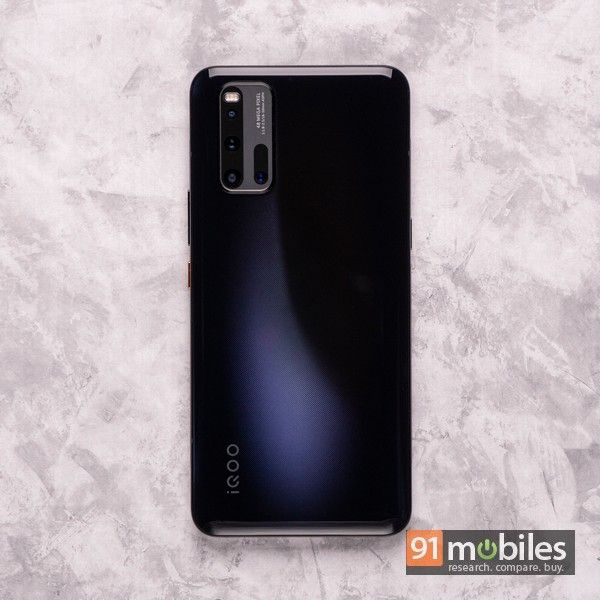
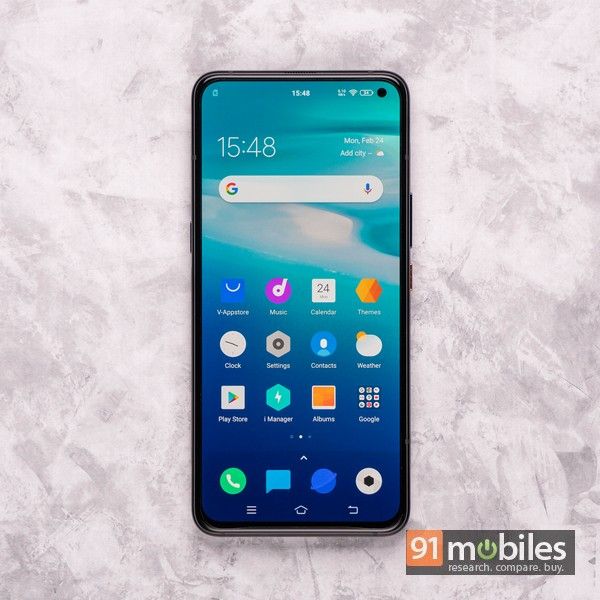
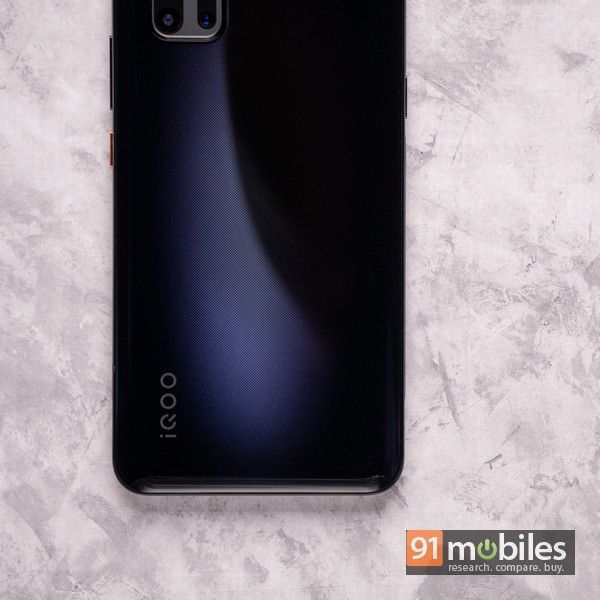

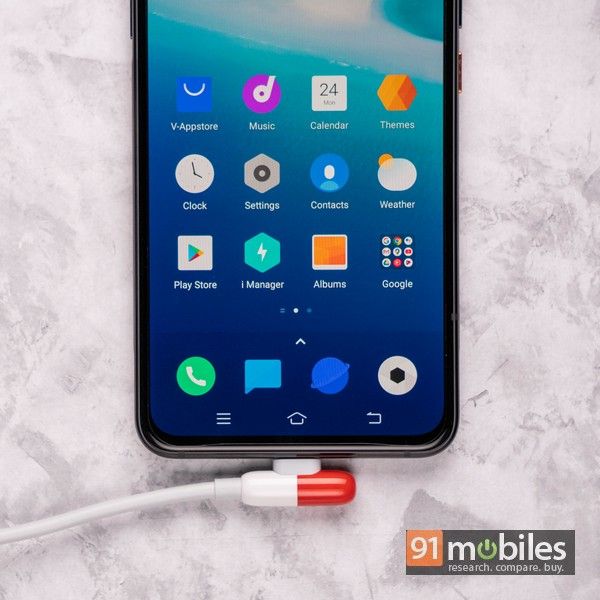
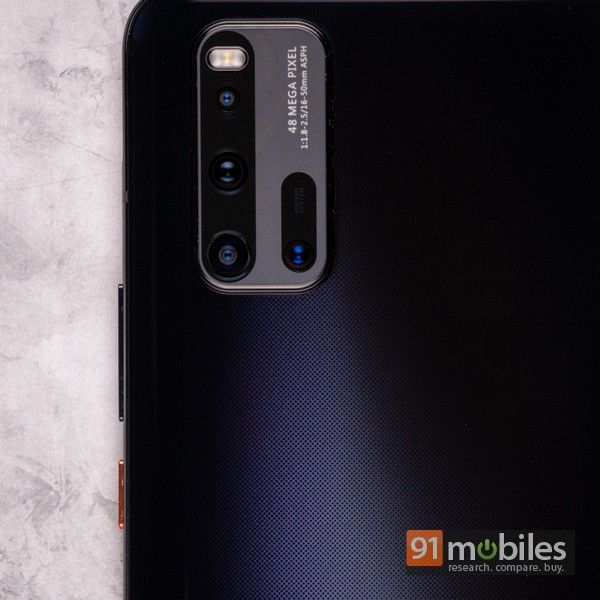
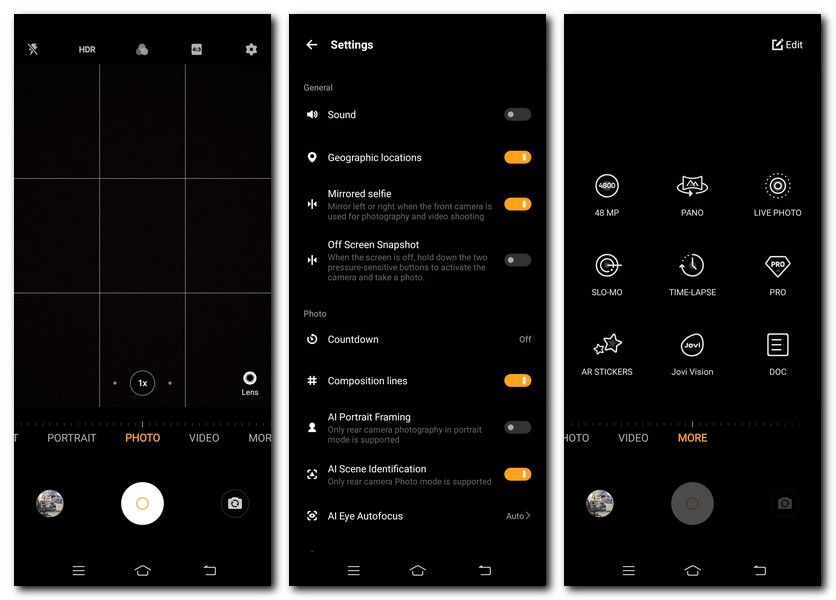






















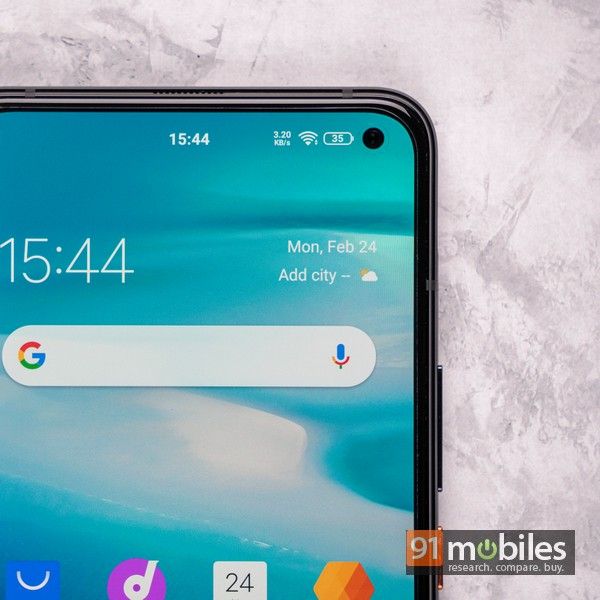
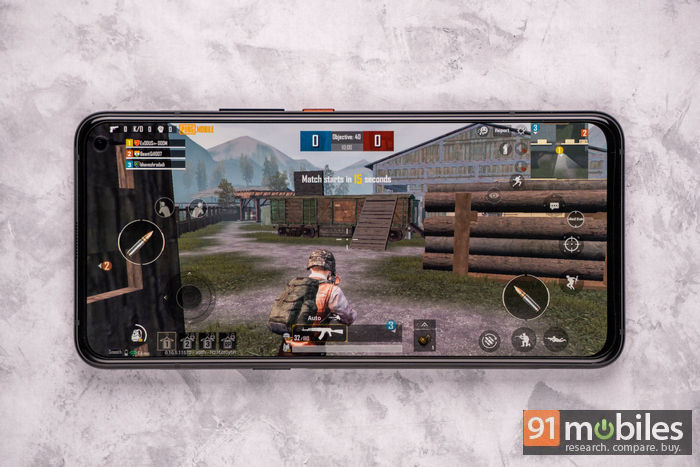

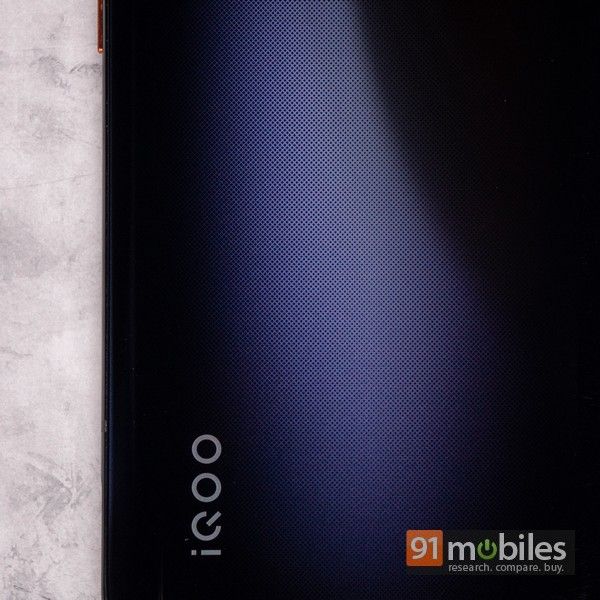
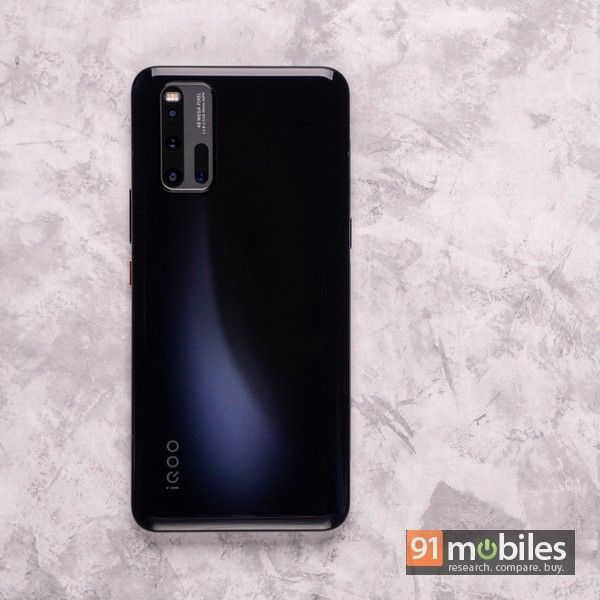






![[Update] iQOO Z9 Lite 5G India launch date revealed, specifications out via Google Play Console Related Article](https://www.91-cdn.com/hub/wp-content/uploads/2024/07/iQOO-Z9-Lite-5G.png?tr=h-110,q-100,pr-true)







